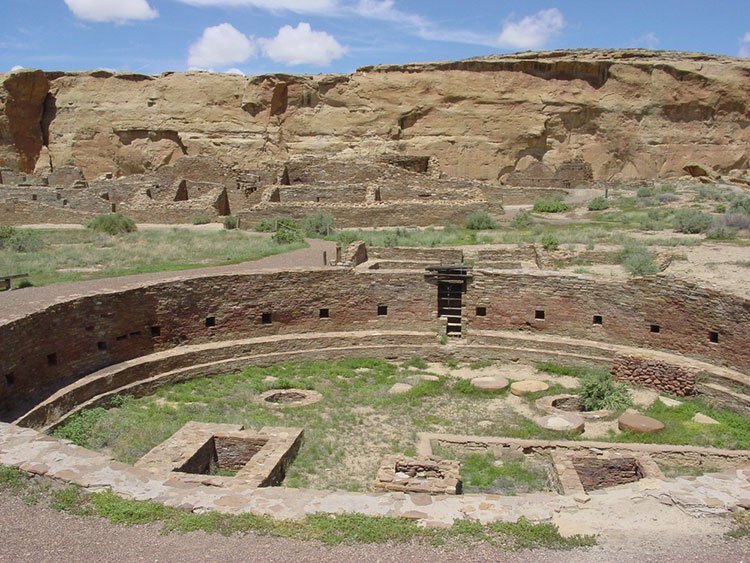Chaco Culture National Historical Park is a unique cultural place, designated as a UNESCO World Heritage Site. Chaco Canyon was the center of a thriving ancestral Puebloan culture a thousand years ago. The monumental scale of its architecture, the complexity of its community life, the high level of its community social organization, and its far-reaching commerce created a cultural vision unlike any other seen before or since.
The cultural flowering of the Chacoan people began in the mid 800s and lasted more than 300 years. The great houses of Pueblo Bonito, Una Vida, and Peñasco Blanco were constructed in the mid-to-late-800s, followed by Hungo Pavi, Chetro Ketl, Pueblo Alto, and others. These structures were often oriented to solar, lunar, and cardinal directions, and lines of sight between the great houses allowed communication. Sophisticated astronomical markers, communication features, water control devices, and formal earthen mounds surrounded them. The buildings were placed within a landscape surrounded by sacred mountains, mesas, and shrines that still have deep spiritual meaning for their descendants.
By 1050, Chaco had become the ceremonial, administrative, and economic center of the San Juan Basin. Its sphere of influence was extensive. Dozens of great houses in Chaco Canyon were connected by roads to more than 150 great houses throughout the region. Pueblo descendants say that Chaco was a special gathering place where many peoples and clans converged to share their ceremonies, traditions, and knowledge. Many Southwest Indian people look upon Chaco as an important stop along their clans’ sacred migration paths – a spiritual place to be honored and respected. This long and unique history is one reason why Chaco Culture National Historical Park was named a UNESCO World Heritage Site in 1987.

